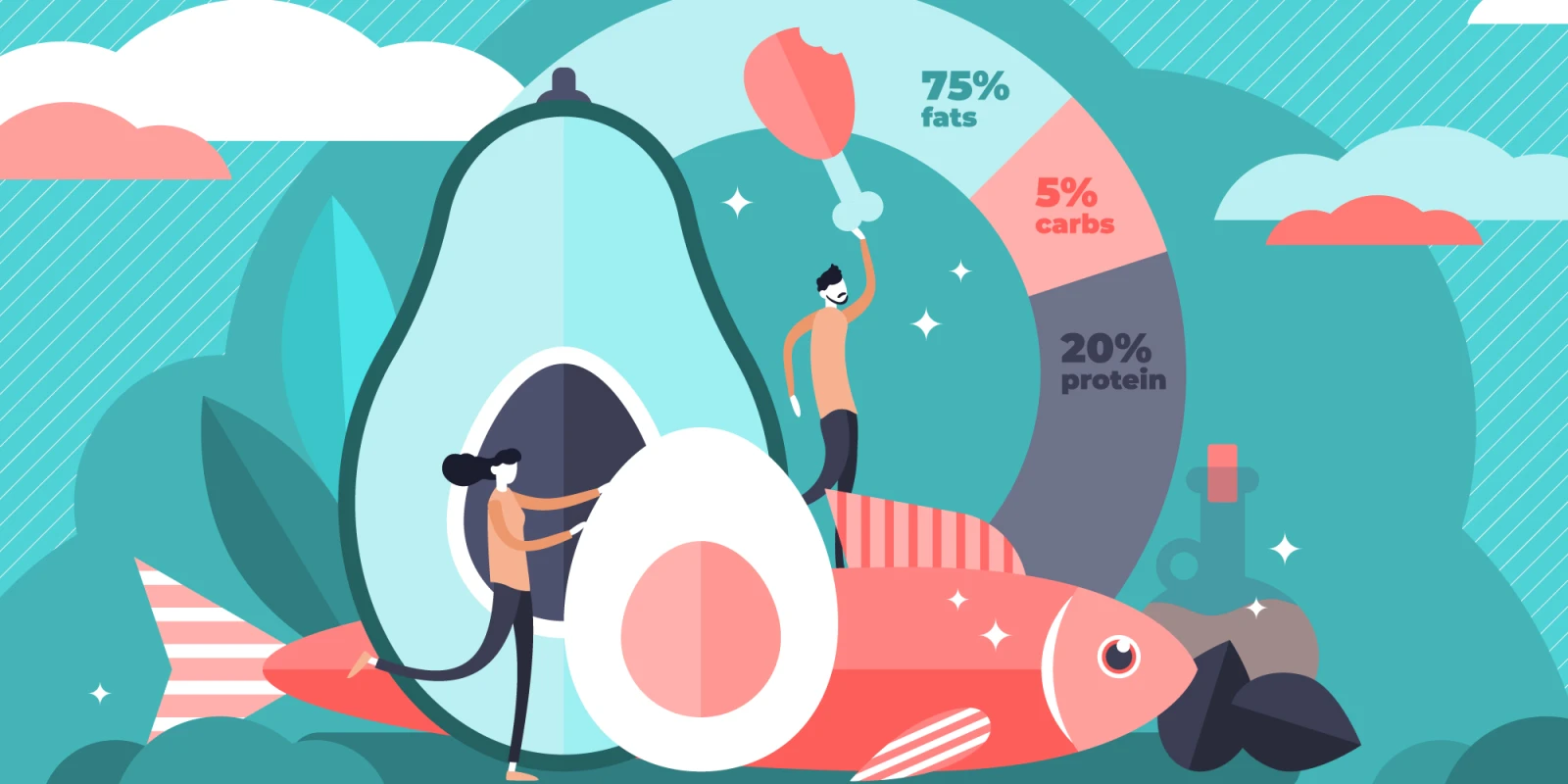
“You bought urine dipsticks?” I asked my colleague wondering if she was actually going to test for urine ketones? For real, you are going on this keto diet; the one that recommends fat and red meat? But this undermines years of teaching our patients about the Mediterranean diet and its benefits. I felt betrayed by my medical colleague and decided to investigate for myself the pros and cons of the ketogenic diet. In my mind I told her, “this is the Atkin’s diet reinvented!”
Feelings of annoyance and “just another fad diet” emerge as a theme for those uneducated in the benefits and science behind the keto diet. However, there are benefits and emerging evidence that this diet is successful in treating immune disease and seizure disorders and will even lower LDL levels! As a practitioner, my qualms about the evidence of the keto diet died after doing a CME on this amazing diet.
Medicine teaches us about states of ketosis and the dangerous effects of this process on our physiologic body systems but the new research on the ketogenic diet promotes its benefits. Indeed ketosis is seen in rare states of diabetes but in moderation can produce successful weight loss.
How does the keto diet work? Evidence based science over the last decade’s shows a high fat diet will increase ATP production and increase mitochondrial function that preserves axonal survival. Ketogenesis is a series of reactions that occur in the liver, kidneys, astrocytes, and enterocytes. The ketolysis is a process that occurs in the cell powerhouse; the evolutionary mitochondria. A result of the process are ketone bodies and the production of B-hydroxybutyrate, acetoacetate and acetone; ironically the prime ingredient in nail polish remover. Initially the metabolism of fats in biochemistry require more ATP and therefore contribute to the weight loss. Burning protein and carbohydrates requires less energy expenditures. This is the simple mechanism guiding how the Keto diet works. Of course weight loss in the first two weeks is often very high but is due to the loss of water when carbohydrates are eliminated. Permanent fat loss occurs after two weeks.
There are five types of keto diets that we need to know as prescribers of the diet. It must be emphasized that a low kcal diet starting at 1200 kcals is recommended at the start and really high fat foods are not recommended. It is absolutely shunned to consume the following foods: sugar, milk, corn, rice, bread, beans, and pasta to name a few of the more common foods. The keto diet is a 3:1 ratio of fat to protein translated as 3 g of fat to 1 g of protein. This means that 87% of the dietary energy is from fat.
The Five Types of the Ketogenic Diet
The Classic diet: this version of the keto diet allows only 6% protein and 4% carbohydrates.
The Modified diet: 12% protein and 6% carbohydrate.
MCT oil diet: 10% protein and 17% carbohydrate.
Low glycemic index version: 30% protein and 10% carbohydrate.
Modified Atkins: 30% protein and 5% carbohydrate.
An example of what we would prescribe in practice is for a 4:1 ration on a 1200 kcal diet:
1200 kcal x 90% fat = 1080/9 = 120 g of fat
Further Recommendations
Hard cheeses such as cheddar have higher fat content and less carbohydrate content than soft cheeses and would be recommended as part of the diet. If our patients chose to maintain the above prescription which is the most aggressive form of the keto diet then supplements with vitamins, fish oils, and L-carnitine is recommended. Unfortunately, this diet does not recommend as much fish as other diets. L-carnitine maintains an important role in the metabolism of fatty acid chains in the mitochondria.
As practitioners, we need to recommend our patients test their urine daily for ketosis and to monitor for signs and symptoms of acidosis, dehydration, growth changes, renal stones, and pancreatitis. The benefits are consistent with lowered calcium levels in the blood, lower insulin levels and blood sugar levels. Respite for PCOS can be due to lower IGF-1 and insulin levels. Emerging evidence suggests that lower IGF-1 levels aid in resolving acne and the increase in LDL particles and lower insulin action on HMG-CoA will help neurological diseases.
We can finally rest in saying eat your steak, cheddar cheese, peanuts and enjoy!
Connie Lapadat, NP, is a family nurse practitioner in El Cajon, CA. She is a 2018–19 Doximity Author.






